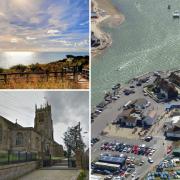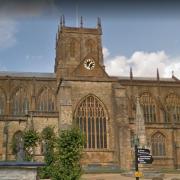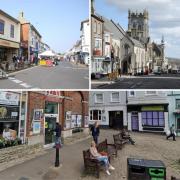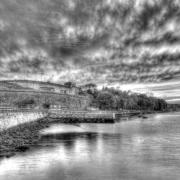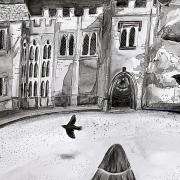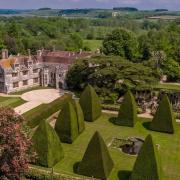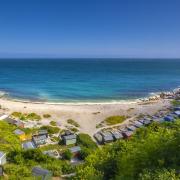James Kingston visits the Isle of Purbeck in spring, and finds lots of exciting places for visitors to discover
Prime Attractions
Spectacular coastline
The Isle of Purbeck's spectacular southern coastline, from near Lulworth Cove to Old Harry Rocks, is part of the World Heritage Jurassic Coast. Purbeck's high ridges, lush green valleys and scattered stone-built villages are irresistible to visitors and residents alike, especially those with cameras.
A bit of history
Corfe Castle's skeletal keep towers over the village of the same name. Mainly Norman as visitors see it now, the castle's centuries of history ended with the defeat of Lady Bankes' makeshift band of defenders by Cromwell's army in 1645. It was slighted the following year.
Saved!
The enigmatic landmark Clavell's Tower, built by Revd John Richards Clavell of Smedmore House in 1830, was teetering on the cliff edge before the Landmark Trust raised funds to have it dismantled, moved 25m inland, and re-assembled. The almost �1million, two-year project was finished last August.
To market
Wareham has been a market town since at least 1268. Farmers' Markets are monthly, on 2nd and 4th Thursdays, at Cottee's in East Street, and Thursday and Saturday markets on the Quay attract visitors and locals every week.
Rock Bands...
Kimmeridge Clay was laid down about 140 million years ago, and is Purbeck's oldest rock formation. Ichthyosaur bones have been found in the cliffs, but more common are the ammonites you can find between the rock pools.
Deserted village
Tyneham was recorded in the Domesday Book, but its history ended abruptly in 1943 when the whole valley was evacuated for army training. Now open most weekends and summer holidays, Tyneham offers a compelling insight into early-20th-century life in a typical Purbeck village.
St Aldhelm's Chapel
The Norman St Aldhelm's Chapel stands at Purbeck's most southerly point. Legend says it was built as a memorial to a daughter and her husband who drowned below the 350ft cliffs as they set out on their honeymoon.
Underneath the arches
Dating from about 1740, Denis Bond's impressive Portland stone arch was built to be viewed from Creech Grange. Long and narrow with castellated elevations, the 'folly' arch is barely a half-mile walk from Creech Hill car park.
Famous for...
Quarrying and stone-carving have been Purbeck's most important industries for centuries.
Stone quarrying
Acton Quarry works the deepest Purbeck beds, and still produces Purbeck stone. A continuous track of Megalosaurus footprints was uncovered here in 1967.
Alongside the track approaching St Aldhelm's Head, Trelevan Haysom quarries, cuts and prepares top-quality Portland stone. The thin overlying Purbeck layer had been removed long before Trelevan's time.
Portland stone quarried at Winspit, below Worth Matravers, was taken away by sea. Huge cranes hoisted the blocks onto barges in 'harbours' blasted from the rock platforms for transfer to larger ships anchored offshore.
St James' Church, Kingston, the third Earl of Eldon's monumental building, started life as a private family church. During the seven years of construction most of the quarrymen employed in its building lost their other customers, and the industry started to decline.
Geology... and a pint!
Named after the basic tools of the stonemasons' trade, Charlie Newman's famous pub at Worth Matravers, The Square and Compass, has developed a unique museum of geology and archaeology, where visitors can learn about local history whilst enjoying a jolly good pint.
Coastal views
Overlooking what is arguably Dorset's most beautiful coastal view, Swyre Head stands above the Earl of Eldon's Encombe House in the inland valley. Until dramatic cliff falls started at Houns Tout in 1903, a carriage drive brought visitors around the cliffs to Encombe House.
Nodding donkeys
The nodding donkey at Kimmeridge Oil Well, sunk in 1959, extracts about 16,000 tonnes of oil per annum from 560m below the surface. The shaft passes straight through the Kimmeridge shale layer to the oil-rich corn brash beneath.
...in detail
Fossil ammonites...
Ammonites were prolific sea creatures around the British Isles long before continental drift brought us north to our present position. By recognising subtle changes in their development over millions of years, geologists can use ammonite fossils to date sedimentary rocks.
Tell us about your favourite Isle of Purbeck places, on our forum at www.dorsetmagazine.co.uk.



